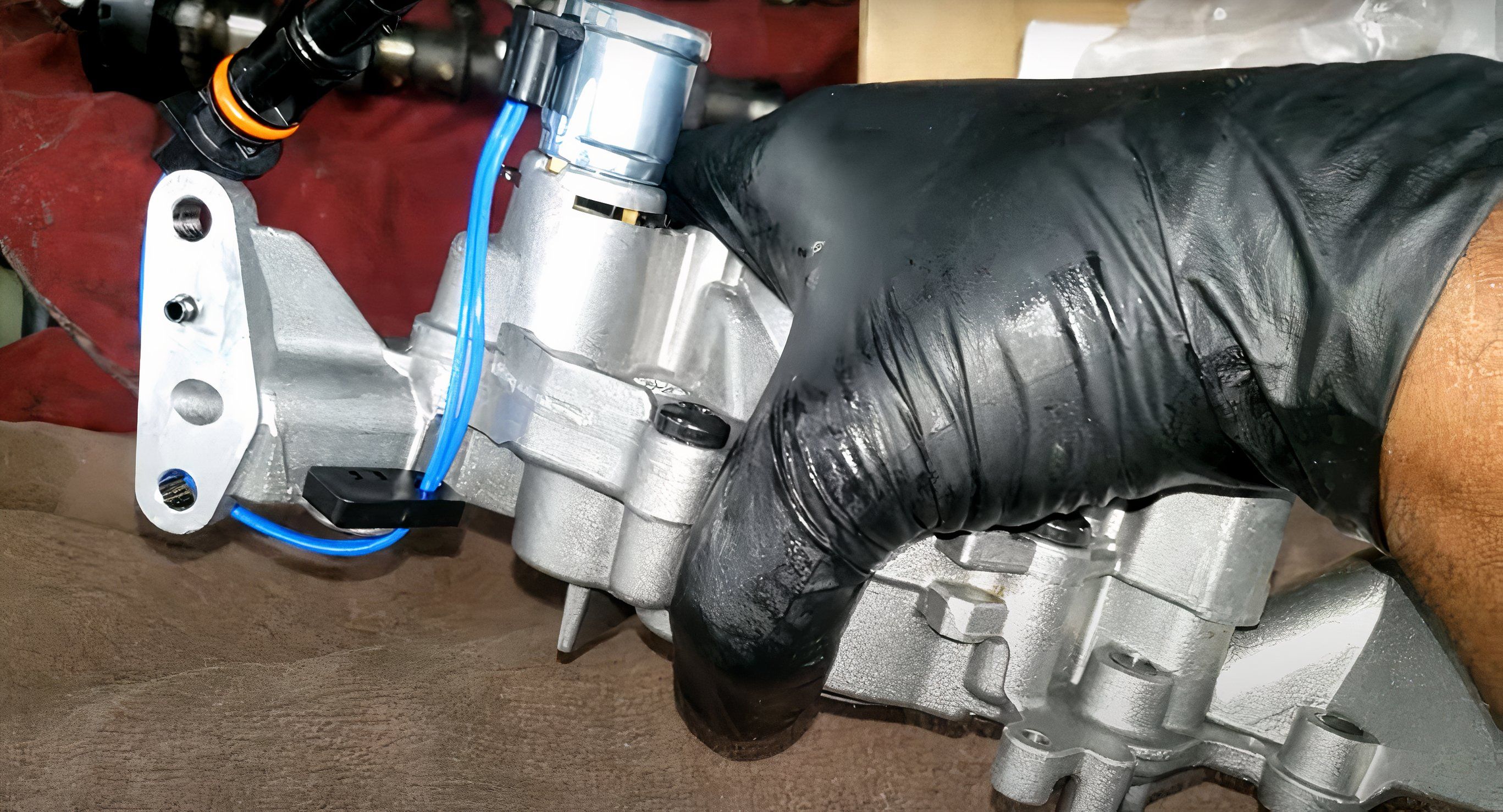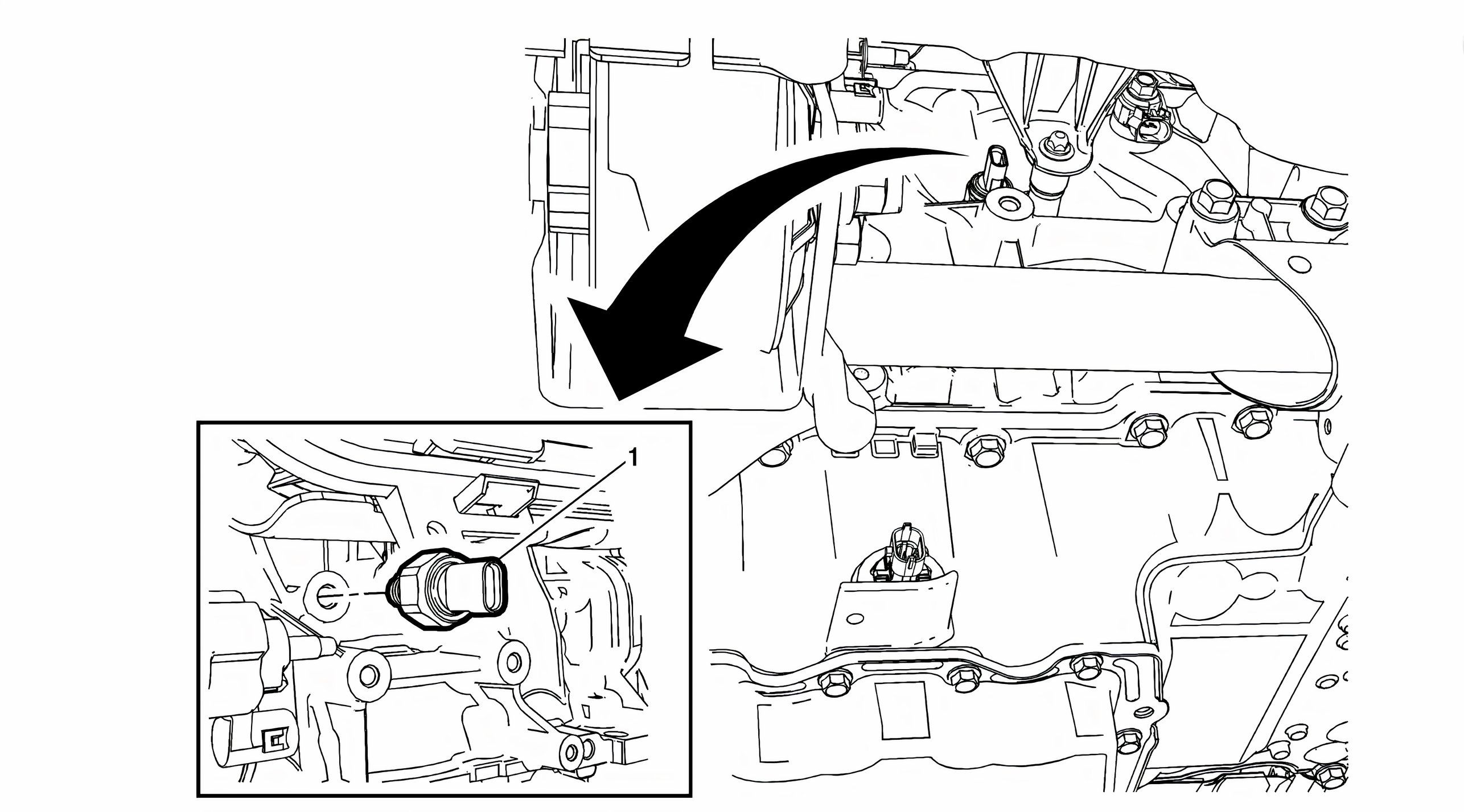
Most of us know that when it comes to the longevity of an engine, engine oil is pretty important. The type, level, and service intervals of engine oil all play a role in how well the lubrication system can perform. Occasionally, we need to address more than just the engine oil and filter. Some vehicles can experience oil pump failures, pickup tube obstructions, or oil control solenoid issues. In some scenarios, these issues can end in major engine damage if left unattended.
One issue that has plagued vehicles that use an electronically controlled variable displacement oil pump involves the P06DE error code, which is related to an issue with the car's oil pressure. This code is usually coupled with an oil pressure warning light and is set when the oil pressure achieved is lower than what is desired by the vehicle's computer. In this article, we'll cover what this error code means, common symptoms associated with the code, how to fix it, and how much it costs to fix.
P06DE Error Code
All model-specific information has been sourced from the manufacturer. Repair/replacement costs are sourced from RepairPal and All Data.
What Does The P06DE Error Code Mean?
The P06DE fault code (for an engine pressure control circuit stuck ON) is set by the PCM when the engine oil pressure is lower than the specified range, while the related P06DD code is set when oil pressure is higher than it should be.
Many vehicles - including the Jeep Wrangler, Chevy Malibu, and Ram 1500 - use a variable displacement oil pump. These pumps have been used for quite some time and serve the same purpose as rotary and crescent oil pumps to circulate engine oil. However, the modern variable displacement oil pump uses an electronic solenoid that varies the oil pressure between two modes: low and high.
During the low pressure mode, the oil pressure will increase naturally with engine speed. When engine RPMs are raised, the oil pressure is raised. This is a normal operation for positive displacement oil pumps. When in high mode, the oil pressure is increased steadily and controlled by the Powertrain Control Module (PCM) through the oil pump control solenoid. During most driving conditions, the oil pump remains in low mode. This allows for a reduced engine load and improved engine efficiency. The oil pump switches to high mode during scenarios that require a greater amount of oil pressure, such as a harsh acceleration.
The PCM monitors the dual stage oil pump and solenoid constantly. It is important to understand the differences between the fault codes. See the service note listed in the Chrysler service manual below.
It is important to note that the Stuck On and Stuck Off diagnostic calibrations are reversed from the fault code descriptions. Reading what the diagnostic is checking for as a failure mode will appear to be the opposite of what the fault description is calling out. [This means] that the Stuck Off diagnostic test is actually checking for a Stuck On condition, and the Stuck On diagnostic test is actually checking for a Stuck Off condition. This IS NOT incorrect.
What Causes The P06DE Error Code?
- Low engine oil
- Improper engine oil
- Obstructed or improper engine oil filter
- Faulty oil pressure control solenoid
- Faulty oil pump or obstructed oil pump
- Obstructed oil pickup tube
- Faulty oil pressure sensor or wiring
- Faulty PCM
Symptoms Of The P06DE Error Code
- Oil pressure warning light or warning message
- Illuminated Check Engine Light
- Abnormal engine noise
- Reduced engine performance
- Abnormal engine vibrations
Why does my oil pressure gauge keep moving while I drive?
In older cars, mechanical oil pressure gauges tend to fluctuate based on throttle application. High throttle loads in an early Mazda Miata, for example, are accompanied by higher oil pressure readings. So if you drive an older car, this could be the case. But if you drive anything from the last 20-25 years and the oil pressure gauge drops while you're driving, there's a good chance you don't have enough oil. If your temperature gauge is high and your oil pressure is low, it means your car is overheating to the point that the oil has gone thin. This is extremely dangerous, and you should pull over immediately to address the issue.
Can I Still Drive With The P06DE Error Code?

Your engine relies on proper pressure and flow to sufficiently lubricate the internal components. If the oil pressure falls too low, engine damage will occur. If your vehicle has set the P06DE error code, we recommend getting it repaired immediately.
How Do I Fix The P06DE Error Code?

As we listed above, there can be several causes of the P06DE error code. Before any repair attempts are made, we highly recommend you have your vehicle scanned for active fault codes. This could be done by your local parts stores, repair shops, emissions facilities, or even yourself if you have a diagnostic scanner. Once you've confirmed the fault code is active, we recommend starting with some basic checks.
Check Your Oil Level And Condition
The oil level of your engine and the condition of that oil is important to the lubrication system. Check your maintenance records for the last time your vehicle had the engine oil changed. If you're still within the manufacturer's recommended oil change interval, check the engine oil level. Low engine oil can be the cause of the P06DE fault code.
If your engine oil level is low, top it off with the proper oil and check for leaks. If your engine has the incorrect oil in it, such as a viscosity that is too thick, the oil pump will have a hard time circulating that oil. This affects flow and oil pressure. Always make sure you are using the correct engine oil in your vehicle.

If your vehicle needs an oil change, consult our oil change guide to do it yourself.
What Happens If You Put Too Much Oil In A Car Engine?
Overfilling your engine can have detrimental effects on your vehicle's performance.
Inspect For A Faulty Oil Pressure Sensor

Depending on the vehicle, the oil pressure sensor may not be easy to locate. We recommend using a factory service manual to find yours. Once located, inspect the oil pressure sensor wiring and test it using the service manual specifications when possible. If you suspect the oil pressure sensor is the culprit of the P06DE code, replace it.
Replace A Faulty Oil Pump Control Solenoid
The oil pump control solenoid can fail due to physical obstruction or open solenoid windings. The oil pump control solenoid is the component that handles switching the oil pump between the high and low modes. If the solenoid has failed on your vehicle, it will become stuck in one position, resulting in the P06DE or P06DD fault codes. When it comes to replacing the oil pump control solenoid, it may be best to let the pros handle it because it usually requires removing the oil pan and timing cover.
Replace Faulty Or Obstructed Oil Pump

The oil pump is a key component of the lubrication system as it is responsible for the movement of oil throughout the engine. If the oil pump becomes obstructed, worn, or prematurely fails, the system will not generate sufficient pressure due to the lack of flow. This causes the P06DE error code to be set. In the case of the P06DE code for the Chevy Malibu and other related vehicles, GM released a service bulletin outlining the diagnosis and repair.
Although the bulletin only applies to GM vehicles, the P06DE code for Jeep and Dodge models has been reportedly remedied by replacing the oil pump. Before replacing the oil pump, we recommend verifying the calibration file of the vehicle's PCM, as Chrysler released an updated calibration file to repair the P06DE fault code. Like the oil pump solenoid, we recommend letting the pros handle this type of repair.
How Much Does It Cost To Fix The P06DE Error Code?
The exact cost to repair the P06DE code will vary from vehicle to vehicle. For some vehicles, a simple oil change will fix the issue, while others will require the oil pump assembly to be replaced. Below, we'll cover the common cost of repair between models and services.
RepairPal estimates the cost of an oil change for a Chevy Malibu is about \$115. The same service on a Ram ProMaster will cost between \$135 and \$150. When it comes to a faulty oil pressure sensor, RepairPal estimates the average cost of replacement is between \$150 and \$170. This repair jumps in price when we look at a specific model such as the Jeep Wrangler, costing between \$200 and \$240.
The more costly repairs such as an oil pump control solenoid or oil pump replacement can cost as much as \$1,500 on some vehicles. This is due to the heavy labor charge as the job can be fairly involved, requiring the removal of the timing cover and oil pan on some vehicles.
World Cars recommends using only accredited professionals and manufacturers for repairing any vehicle errors or problems.
Sources: RepairPal, ALLDATA, NHTSA




Post a Comment